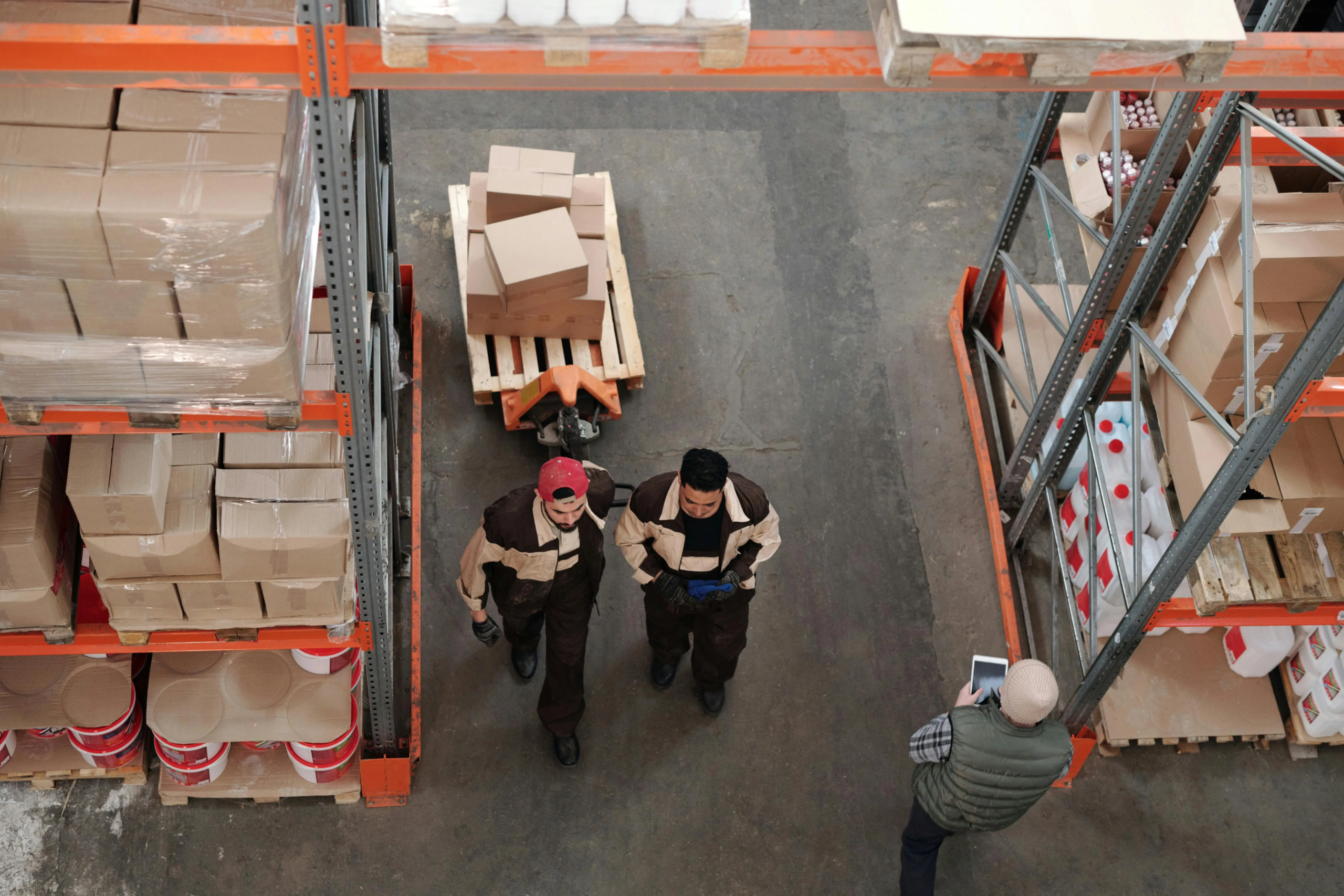Automotive batteries are the main components of vehicles that power their engine. However, they often contain dangerous components that make them hazardous materials. Thus, they require additional actions during transportation to ensure safety. The main aspect is to clarify automotive batteries’ hazmat class and potential risks.
LAX Freight aims to help you better understand the hazmat classification of automotive batteries, their risks, and measures to prevent accidents and ensure regulations compliance.
What Are Hazardous Materials?
Hazardous materials (hazmat) are items that can pose a risk to health or property. Their transportation and handling require additional safety measures to prevent accidents. Hazardous cargo is classified into several groups based on their components. Usually, the categories of hazardous materials include:
- Flammable cargo. It covers materials that can ignite and burn, such as gasoline and diesel fuels.
- Corrosive substances. They can damage or destroy living tissue or other materials upon contact. It includes sulfuric acid or hydrogen peroxide.
- Toxic substances. These materials can cause harm when inhaled, ingested, or absorbed. It includes certain chemicals and pesticides.
- Reactive substances. Materials are prone to chemical reactions under certain conditions. They can cause explosions or fires, like laboratory chemicals or explosives.
- Other dangerous goods. They don’t fit into other categories but still pose risks. It can include some types of batteries and electronic waste.
Hazardous materials require careful handling to avoid accidents. Workers who handle such cargo must have additional skills and use special equipment to ensure safe transit.
Automotive Batteries and Hazard Classes
Automotive batteries are essential for vehicle operations. They ensure the operations of engine and electrical systems. However, batteries contain dangerous components that require special handling. Their safe and reliable transportation requires understanding the hazmat class of automotive batteries and needed safety actions.
Types of Automotive Batteries
- Lead-Acid batteries. It’s the most common type of automotive battery. They contain lead plates and sulfuric acids that make them dangerous cargo. Lead-acid batteries are included in the Corrosive substances category amid the corrosive nature of sulfuric acid. It can pose risks of burns or skin, soil, and water damage.
- Absorbent glass mat (AGM) batteries. It’s a subtype of previous batteries. AGM batteries are used for durability, reduced maintenance, and higher efficiency. Due to their corrosive electrolyte content, they also fall under the Corrosive substances category. They pose corrosive risks and require careful handling and proper ventilation.
- Lithium-ion batteries are used for hybrid and electric vehicles as they provide high energy efficiency and long cycle life. They are classified as Miscellaneous dangerous substances and articles for lithium containment. Lithium-ion batteries can present risks of fire and explosion with the release of toxic fumes.
- Nickel-metal hydride (NiMH) batteries are used in hybrid and old electric vehicles. They offer a balance of energy density and safety. Under normal conditions, they aren’t usually classified as hazmat. However, based on their size and configuration, they can be subject to specific regulations. Large NiMH batteries fall under the Miscellaneous Dangerous Substances and articles. Their hazards include leakage of electrolytes.
- Nickel-cadmium (NiCd) batteries. They are less commonly used in modern applications, but can be used in older vehicles. They contain potassium hydroxide that makes them fall under the Corrosive substances category.
Automotive Batteries Are An Example of Which Hazardous Class?
Automotive batteries are usually classified into two hazardous classes. They differ by their components and the potential risks.
- Class 8 – Corrosive substances. This class covers materials that pose risks to living tissue or other materials upon contact. They can lead to chemical burns, metal degradation, and other reactions. Batteries that fall under this class pose risks in the case of improper handling or damage. This class includes lead-acid, AGM, and NiCd batteries.
- Class 9 – Miscellaneous dangerous goods. It covers substances that may cause damage during transportation or handling but do not fall under the more specific categories. This class includes a wide range of materials. As for automotive batteries, class 9 includes lithium-ion and NiMH batteries.
Logistics and Transportation of Hazardous Materials
Transportation of hazmat materials requires careful planning and precaution measures to ensure the safety of drivers, trucks, and traffic participants. General requirements include packaging, labeling, handling, and documentation aspects. However, hazmat classes may require additional measures according to their risks.
- Packaging. All dangerous items must be packaged properly to prevent leaks and spills. Still, different hazmat classes require specialized package. In particular, Class 8 requires packaging to withstand corrosive substances. Proper materials contain any potential leaks, minimizing exposure risks.
- Labeling. Accurate labeling is also a crucial aspect of safe transportation. Automotive batteries should be marked with their hazard class to inform handlers and emergency responders. Labels should also include handling instructions and emergency contact details.
- Handling. This aspect requires an understanding of the hazard class and its risks. Employees must be skilled at managing potential dangers related to the type of batteries they deal with. These skills should also include training to prevent potential accidents.
- Transport vehicles. Trucks that transport automotive batteries must comply with safety standards and be equipped with specific features. It includes spill containment systems, fire extinguishers, and proper ventilation. Regular inspections and maintenance of vehicles are also essential.
- Documentation. Proper track records are also required. In particular, DOT required proper shipping papers, safety data sheets, and other necessary documents.
Safety and Compliance
Ensuring safety and compliance in shipping hazardous materils involves several key strategies. Here are some examples how to comply with DOT requirements.
- Training and certification. Workers who handle hazardous materials should undergo specialized training. They must understand the hazard class of shipped cargo, its potential risks and know how to prevent potential accidents.
- Emergency response plans. A reliable emergency plan is vital when shipping dangerous materials. It involves the use of safety equipment, such as spill kits or fire extinguishers.
- Regular inspections. Regular checkups of storage and transportation facilities to identify potential risks. For automotive batteries, you should check packaging integrity, vehicle conditions, and compliance with safety protocols. It helps prevent accidents and ensure adherence to safety regulations.
- Compliance audits. Audits should check handling and transporting conditions, packaging, labeling, and documentation. It helps identify areas for improvement and ensure proper safety practices.
Regulatory Compliance
One of the main aspects in handling hazardous materials is regulatory compliance. In the US there are agencies and organs that monitor the handling, storage, and transportation of these goods.
- Department of Transportation. The DOT regulates safe commercial transportation, covering a range of goods. As for hazardous materials, the DOT requires special skills and equipment.
- The Hazardous Materials Regulations (HMR). It’s the standards of the DOT for the classification, packaging, and shipping of hazmat. For automotive batteries, they specify the required measures in handling and shipping.
- Occupational Safety and Health Administration (OSHA). These regulations focus on the safe handling of dangerous materials. This includes requirements for training of workers, protective equipment, and emergency response actions.
Conclusion
Automotive batteries are often classified as hazardous materials as they pose risks to health and property. In their shipping, it’s crucial to understand what hazard class are automotive batteries and their potential risks. Workers should adhere to strict safety protocols and guidelines, including packaging, labeling, and compliance measures.
LAX Freight understands the complexities of hazmat transportation and is ready to simplify this process. We implement necessary safety measures and utilize innovative equipment to protect your load. Contact us to learn more about our hazardous materials transportation services.


